By Mary Lyn Fonua
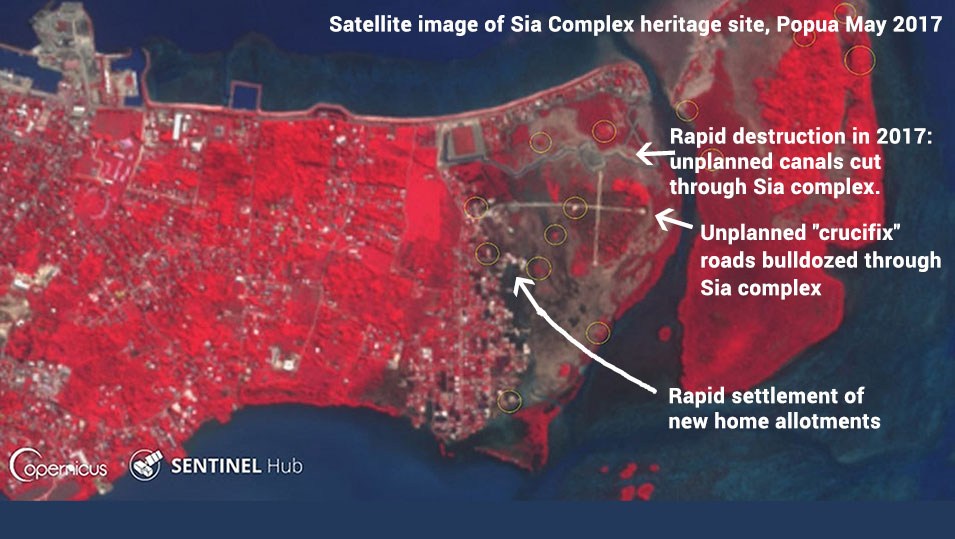
Tonga's important Sia Complex at Popua, the area of Tonga's creation myth, is being destroyed by an ad hoc development, driven by the same government that pledged to protect the heritage site.
Latest satellite imagery, made available by the Tonga Heritage Society, shows that not only have canals been dug across the heritage site, but also two new roads have been bulldozed through the area. In recent weeks a works camp has been set-up on top of one of the same Sia that parliament said it would protect – and the top of the Sia has been levelled by heavy earth moving equipment.
The Tonga Heritage Society planned to meet this afternoon Wednesday May 24 to decide on a plan of action, after recognizing that Parliament has failed to stand by its decision to protect the site.
"The problem is they think it's just a pile of stones," society president Dr 'Ana Taufe'ulungaki told members. "They don't understand why it is important."
The group's Press officer, Shane Egan, pointed out that the main concern is that the Popua Sia Complex is a complex, consisting of approximately 14 interconnected mounds of various nature. "This is a grand scale site – not a single stone mound."
Shane said that new research (Ka'ili & Egan) this year shows there may be a possible correlation between the layout of the ancient complex of pigeon snaring mounds and walkways on the lagoon edge of Tongatapu and the associated star constellation Mataliki (Pleiades) that was important to ancient Tongan navigators. He has illustrated this by drawing red rings showing positions of the stars overlaid on LiDAR imagery of the ancient sia complex, where the positions of known Sia are indicated with white rings.
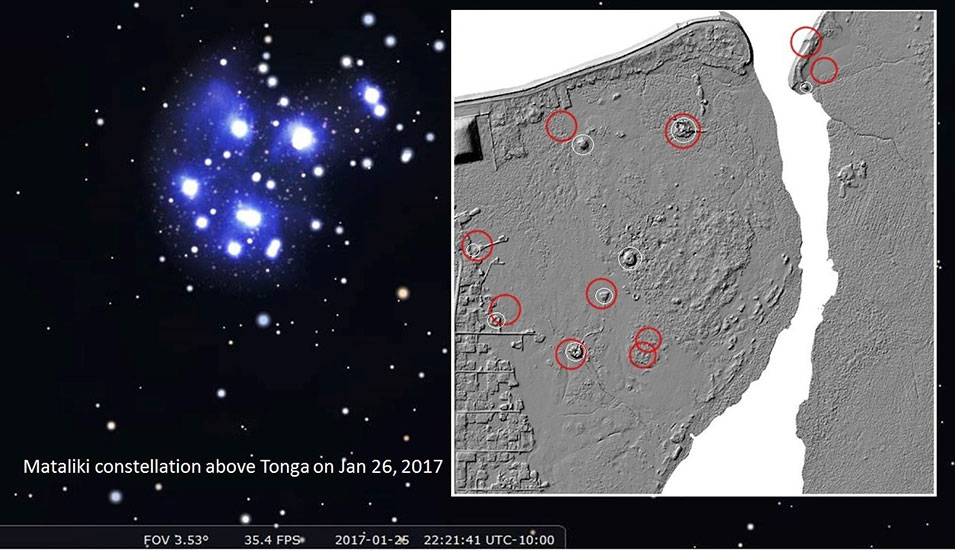
There remains much to be learned about the complex.
Archaeological research has shown that around 3,000-4,000 tonnes of sandy fill and 457 tonnes of coral limestone was used in the Popua complex – all moved by hand around 600 to 800 years ago.
Tongan stone artist Sioeli Filipe Tohi, who has previously researched Tongan stone langi under a Creative New Zealand project, is fascinated and impressed by how the Tongan ancestors managed to organise such a project of scale and complexity at Popua. Filipe is concerned that current works at the site have destroyed the remains of some of the raised walkways that interconnect the many "celestial" Sia that form the complex, simply because the developers show no recognition that they are there.
"Archaeologists, stone masons, architects and artists need to sit down and talk about it and how rebuild it or not rebuild it – and not trying to make it look like something else," said Filipe. "I think for me it is really important to understand and to be proud of what our ancestors did. To build buildings here is really sad, this is the heart of Tonga, this is where the beginning of the Tu'i Tonga and how the culture of Tonga started from. From here where the gods came down, where 'Aho'eitu began."
Petition
Tonga's parliament in August 2015 voted 15-2 to accept a petition signed by 700 people calling for preservation of Tonga’s cultural heritage in the complex of Sia Heu Lupe and related mounds in Popua that are endangered by a settlement subdivision. At the time strong opposition to the petition was made by the two who lost the vote – one, Mateni Tapueluelu, a local member of parliament (who had celebrated the new land allocations on the exposed reef area), and the other, 'Etuate Lavulavu, who believed there was no further use for the pigeon snaring mounds.
So it came as a shock to conservationist petitioners when, at a press conference on May 11, the Prime Minister Hon. 'Akilisi Pohiva revealed that the same 'Etuate Lavulavu was now supervising the controversial site works at the Popua heritage site, and that the massive works are being done outside of regular government procurement process. The PM told reporters that he is managing the project himself using unidentified funding, and that there was no proper procurement process or environmental assessment because “It slows down the progress of work. So there is no plan, no committee, we just work outside.”
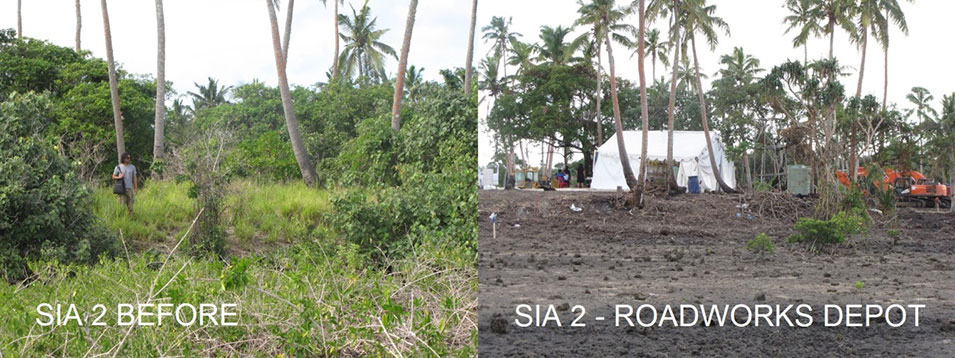
Shocked
Members of the fledgling Tonga Heritage Society are "shocked and bewildered" by the destruction caused by new works at the site this year.
Dr 'Ana Koloto, who led the petition in 2015, said last week that she was "praying for divine intervention ... because we are dealing with a PM is determined to destroy this Heritage Site. Obviously the PM had no intention of preserving and safeguarding the Sia Heu Lupe when he and 17 other MPs voted for our petition," she said.
However, last week the central and most important Sia known as "Sia 1" was still standing. "We must try to save Sia 1 at least," said 'Ana.
Preservation
In 1987 an archaeologist, Dirk Spennemann, proposed four options of action for the Government of Tonga to take regarding the preservation of the Sia Complex.
A: Preservation of the individual sites only (preference 3).
B: Preservation of the main group of sites (preference 2).
C: Preservation of all archaeological sites (preference 1).
D: Unlimited development and gradual destruction of sites (not a preference).
"Unfortunately, despite their promises to the contrary, the Government has chosen option 'D' ... and a speedy destruction is now upon us," said Shane, who has collected a history of the site. "Without the aid of the LiDAR imagery Spennemann's group only recorded a portion of the site. Unfortunately, most of that portion he did record is pilfered, buried and lost forever. Three of his four Sia gone and the last and most important is next up to be lost. Any day - or perhaps yesterday. My visit to the site last week terrified me."
He also pointed out, "As this indiscriminate digging, filling and clearing is going on around the low-lying tidal zone, [the resulting] siltation and pollution of the lagoon is a big issue."
Sacred and historical
Wendy Pond, an academic, who has written extensively about the Popua site and called attention to its historical importance and biodiversity, is calling for "a review of the process that has allowed the most sacred historical site in Tongatapu to be bulldozed after the government had received a people's petition and had assured petitioners that the structures would be protected."
Dr Lea Lani Kinikini Kauvaka Ph.D., a member of Tonga Voyaging Society and a Research Associate at the Institute of Education of USP Tonga, said she was "horrified".
"Many of the signatories of the 2015 Petition are shocked and saddened at the disregarding of the Petition by the PM and are horrified at the construction of a golf course and canals in a site promised us to be preserved and developed and managed as a heritage site."
Nature and Heritage Reserve
The society believes that professional help from archaeological site specialists is required if the PM is to save any of the Popua Heritage Site - as promised. And that it is definitely not a job for an unprofessional and that "due process must be followed."
Along with other action, the society is looking at a proposal for a Nature & Heritage Reserve where research and restoration can still be done on the cultural sites here. The intertidal marine environment, mangroves and low level forest can also remain protected.
Oceanic archaeologist Prof David V. Burley who visited the site in 2015, said the loss of the site and destruction of its features is a tragedy for all Tongans. “The site is very significant and its precariousness had been recognised and complained about since the 1980s, probably before it was surveyed out here and properties were allocated,” he said.



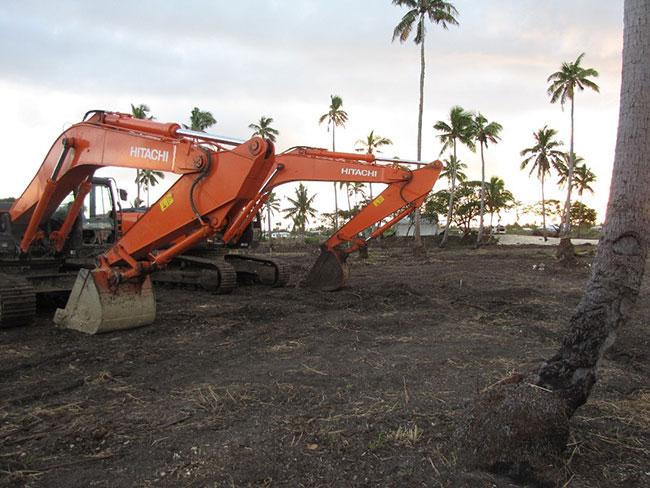
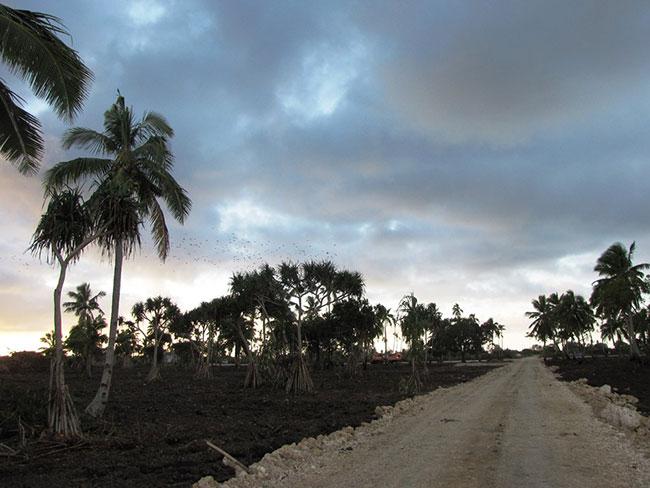

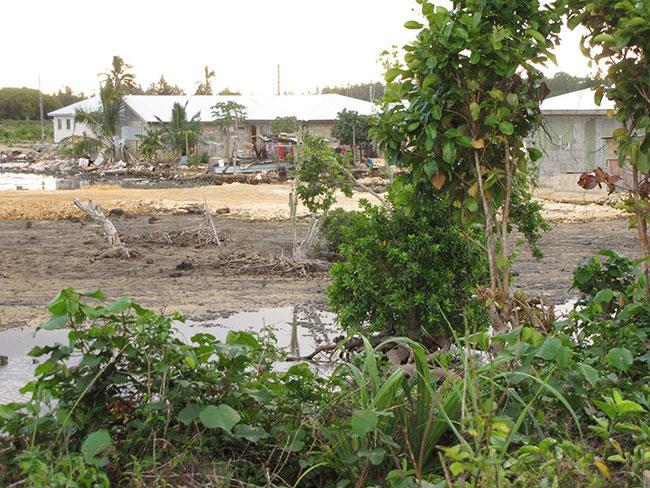

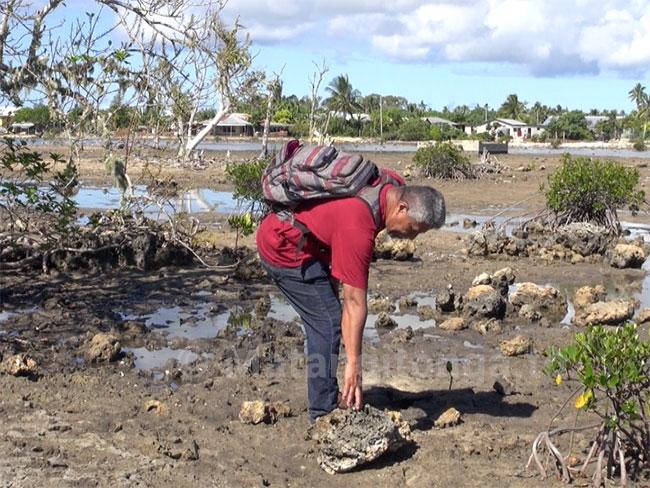

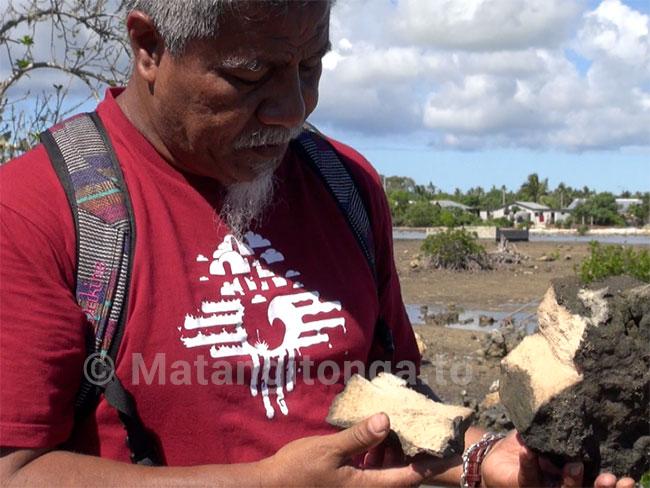
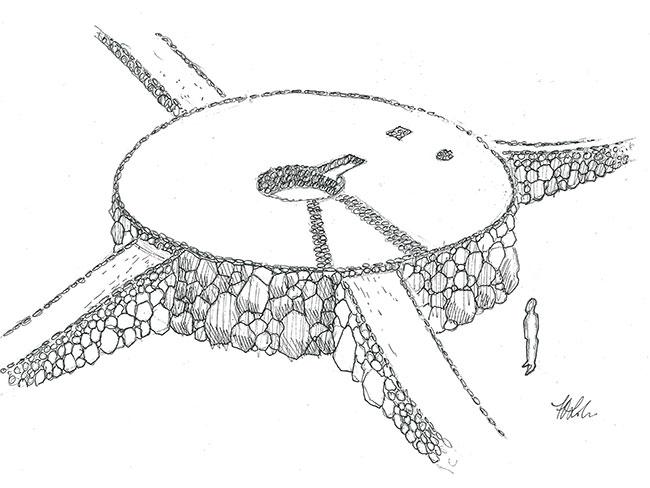
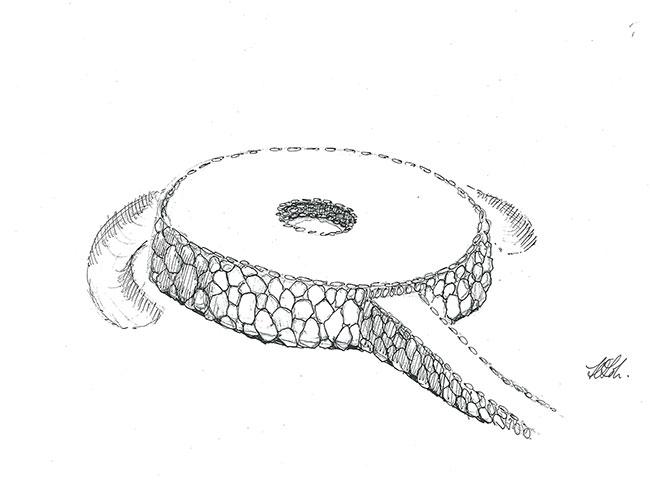


Comments
Excellent informative article
Excellent informative article. I learnt a lot I did not know. Malo Lahi Mary Lyn Fonua. Shane Egan, Filipe Tohi and your helpers. I look forward to learning more about the origins of Tonga culture and heritage. I hope that Tonga's children are being taught these positive aspects about our past, culture and heritage. While it may be too late to save what has already been destroyed, it might not be too late for our PM to have a light bulb moment and realize that building a river/canal and a golf course is Not the priority of our beloved mother country & its inhabitants at this point in time. In a month when media headlines highlighted youth suicides, increase in the number of deportees, drug taking and smuggling, police incompetence, violent robberies, home invasions and persecution of the Chinese community, Government cancelling the 2019 Pacific Games, one doesn't have to be politically astute or a genius to agree that there are other priorities for our PM and his Ministers and lackeys to attend to than destroying / desecrating a heritage site of such importance. And to do it in the way he is doing it, i.e. outside the formal system of governance, is totally baffling and does not win any points for the type of democracy that he seems hell bent developing in the last remaining Polynesian Kingdom on God's Planet Earth. I am still pondering why it is that civil servants and employed workers in some countries have to retire when they reach 60 - 65 years. But politicians can continue to be politicians until they die/ meet their maker as long as their people vote them in. Perhaps this why it is claimed by some that the people get the government they deserve.I'll pray for guidance on that one.